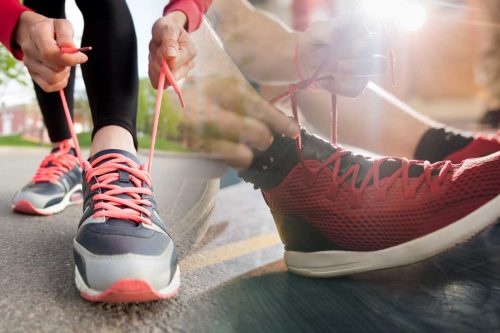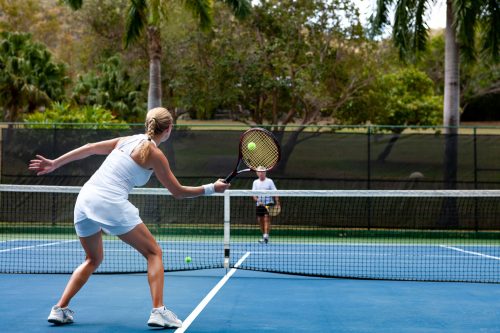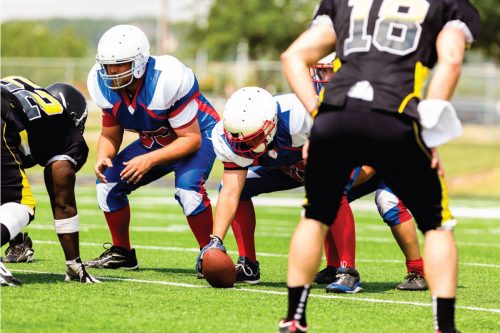Before you hit the courts, did you know that you can actually wear tennis shoes made for tennis? Stay active and healthy when you select sport-specific gear. Tennis shoes can also help improve the skill of a player and keep you safe. Are your tennis shoes non-slip? We've researched tennis shoes' features to help you select the best pair to keep your game in full swing.
The best thing to consider regarding a tennis-specific shoe is safety. To properly play the game, tennis shoes must be non-slip to gain traction on the court. There are a few things to consider when selecting a tennis shoe to wear while you play, such as:
- the type of mobility the shoe can offer,
- the type of court surfaces on which you play, and
- how long you have already worn a pair of tennis shoes.
Understanding those three things will help you consider the best tennis shoe for your gameplay. Now only will your game improve, but you'll stay safely upright on the court wearing tennis-specific shoes. Please keep reading as we take an in-depth look at these shoe features.
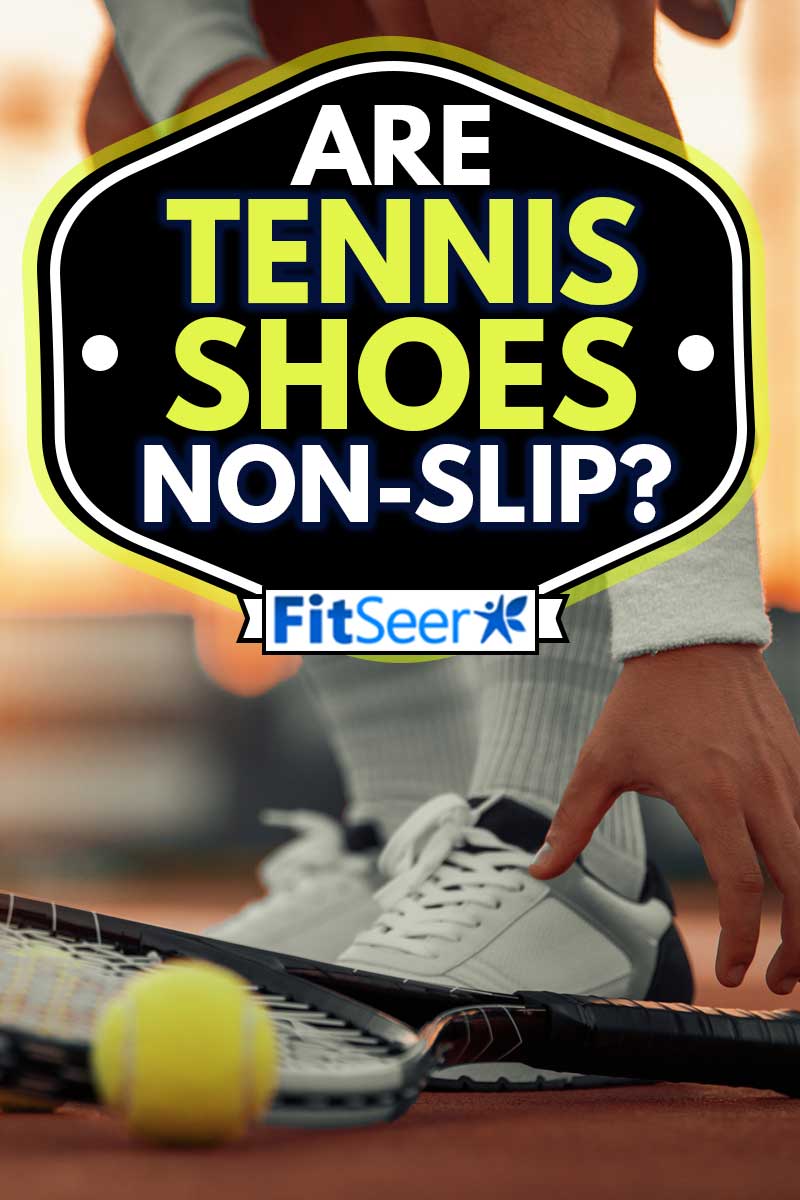
Mobility
First, let us define mobility. Mobility is the ability to move freely and effortlessly. In tennis, it is highly necessary to be agile and move easily to return the ball to your opponent. Tennis mobility differs from simply running. This is because tennis requires shorter bursts of energy within a smaller area to achieve the movement.
Can you wear running shoes for tennis?
You cannot wear running shoes for tennis because running shoes and tennis shoes are not made with the same intent. Running shoes are designed based on the idea that the runner will be moving forward in a straight line. This means that the cushioning for a running shoe is heavier and specific to the foot's heel and toes. Running is an intense sport, especially if running long distances. The technology of the shoe is designed to protect the heels specifically from harsh impact.
Do you really need tennis shoes?
Yes, the best option for gameplay is wearing tennis shoes. This is because tennis requires significant lateral movement to move from either side of the court quickly. Tennis-specific shoes are low to the ground to prevent injuries such as tripping or rolling an ankle when moving sideways. Check out the Tennis Express Blog to find out more information.
Type of Courts (Hard Courts, Clay Courts, & Grass Courts)
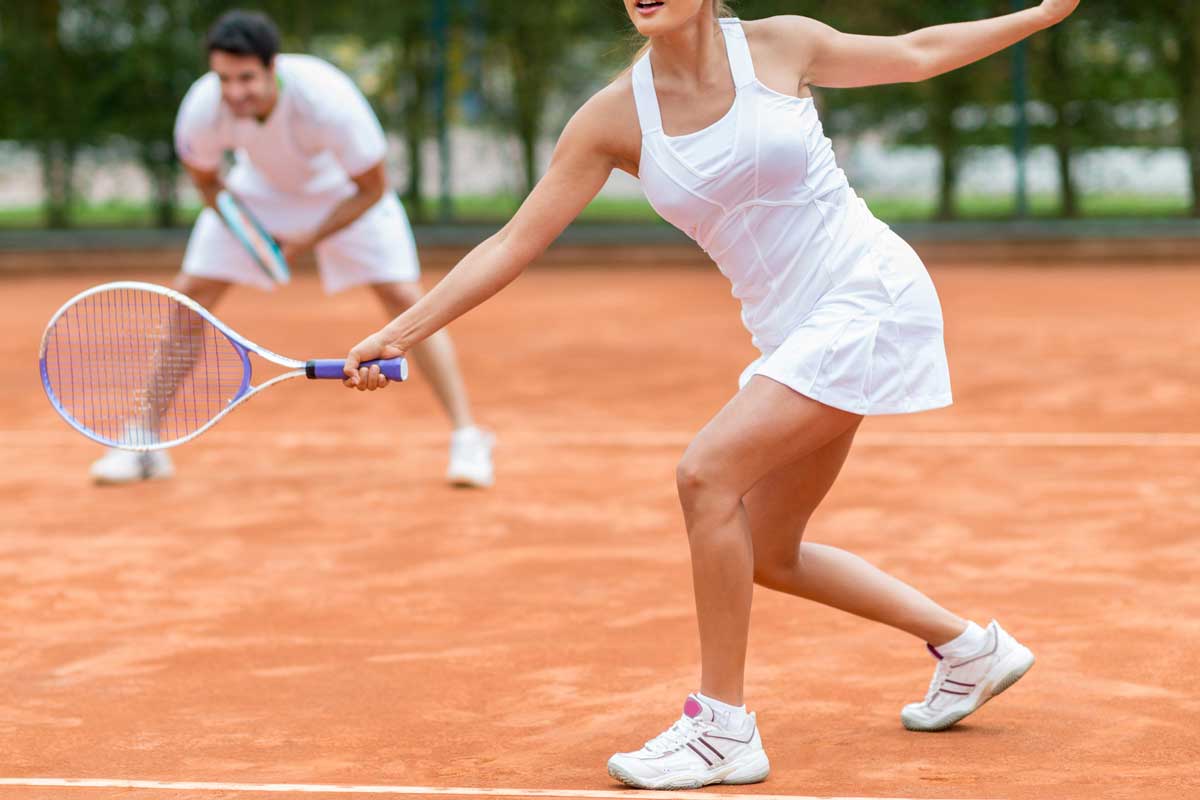
Whether you are beginning to get into the sport of tennis or an avid player, it is important to note the kind of court you are playing on. The type of court being used has a specific effect on your ability to move and, consequently, how your shoes react to the surface.
Which is the best hard court tennis shoe?
Hard courts are the most durable surface because they are designed to withstand all kinds of weather. Hard courts are paved with multiple layers of asphalt to create a thick surface and achieve a dark coloring. Shoes made for hard courts tend to have textured bottoms. Most hard court shoes will have patterns or designs at the bottom of the shoe to give better traction.
With the multiple layers of asphalt, hard courts can wear out a shoe fairly easily. The textured bottoms allow for durability and even cushioning while moving across a hard court. The best hard court tennis shoe would offer a design pattern at the shoe's mid-sole for less impact when abruptly starting and stopping for the ball.
Clay Court
Clay courts are designed with clay, typically laid in a field. Clay courts tend to get sticky and require a shoe to prevent the clay from attaching to the shoe during play.
Clay court shoes will offer patterns on the outsole of the shoe for this reason. The outsole pattern provides more traction for lateral movement and makes sole contact with the ground. This support is mainly seen in the upper part of the shoe, where players tend to bounce to stay agile when anticipating a hit.
Grass Court
Grass courts are really no different from a soccer field because they are made of grass yet have tennis court lines painted across them with a net in place. In the same fashion as soccer cleats, grass court tennis shoes require rubbery cleats to obtain a better grip on the grassy terrain. It may sound odd to wear cleats in tennis, but the grass can be slippery and therefore demands nubs at the bottom of the shoe to prevent slips.
Overall, it is important to understand where your next match will be held to prepare yourself with the appropriate pair of shoes. Cleats will not have the same support on a hard court as they would on a grass court—same idea for a textured bottom shoe on a clay court and so on.
Check out the New England Sealcoating Blog to learn more about tennis shoes in relation to the court surface.
Tennis shoe Lifespan
Tennis shoes are not made of magic material. Unfortunately, your shoes do have a shelf life. Like all things, it is important to consider how often you are using and cleaning your tennis shoes.
How long should tennis shoes last?
There is a good rule of thumb in the athletic world that considers mid-soles specifically. This consists of about 45- to 60-hours of playing time before replacing the shoe.
Although it can be hard to gauge how many hours a shoe was worn, try to give the best estimate. Another way to tell if a shoe needs to be replaced, place the tennis shoe on a flat surface, and observe any unevenness. If there is an obvious lopsided look, then it is time to look for new shoes.
As mentioned before, the type of environment a shoe is worn on can determine its lifespan. This means that the outsole can wear out faster if used on a hard court rather than its intended clay court. If you are pretty active on the court, it can be worth replacing a worn-out shoe to prevent injury.
How do I know if my shoes are slip-resistant?
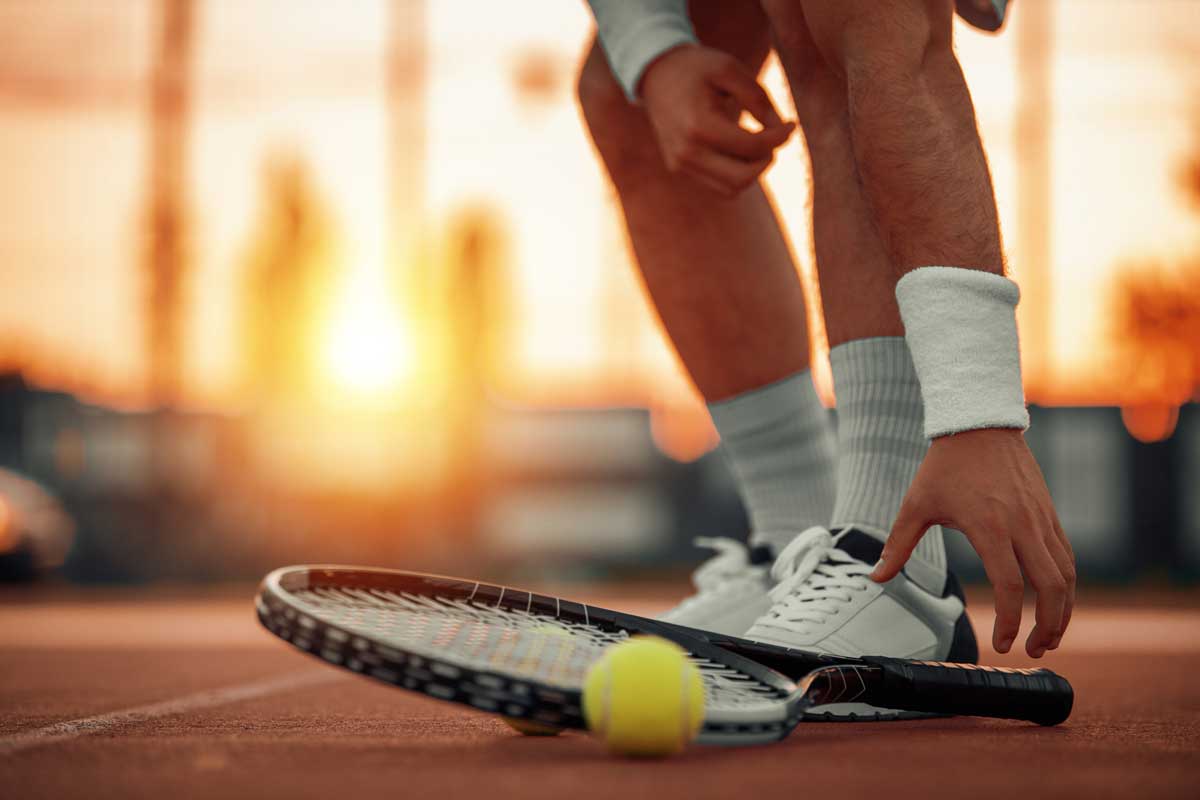
Let us assume that the shoes you have now are not slip-resistant. Are there ways to identify slip-resistant shoes on your next shopping outing? Absolutely! Slip-resistant shoes have outsole designs that maximize contact with the floor or ground. Typically, shoes have rounded edges on the soles to prevent liquids from becoming trapped under the shoe and cause slips.
Outsoles of non-slip shoes have many grooves cut alongside the sole to increase flexibility and movement. Basically, slip-resistant shoes do not have regular design patterns and should have these irregular groove features to keep them distinguished.
What shoes do professional tennis players wear?
If you are still unsure about a tennis shoe's lifespan, consider what trends the professional players are following and why. For instance, the ATP Tour creates a list of the top 50 players' tennis shoes every month. The brands vary from Nike to Adidas to New Balance. Check out the lists here.
Are Babolat tennis shoes good?
Babolat is known for high racket performance; however, their tennis shoes offer stability and support for intermediate and advanced players. This is because it is a performance-based shoe with lightweight durability. According to the ATP Tour list, only one player is wearing Babolat tennis shoes. Benoit Paire, a French professional tennis player, is said to wear Babolat Propulse Fury ACs.
The accessibility to Babolat tennis shoes is very high, and most shoes can be bought online.
Check out this link to shop for Babolat tennis shoes on Amazon.
It is important to note that this product's description says it is an 'all court' tennis shoe. This means it is primarily designed for hard-court environments.
Which is the best Nike shoe for tennis?
Nike is a very well-known and popular brand. For that reason, 11 out of 50 players are wearing the Nike Air Zoom Vapor X, documented on the ATP Tour top 50 lists. This shoe is the most popular and used shoe among ATP players because of its new outsole pattern designed for durability.
As we discussed before, outsole groove patterns are specifically used for clay courts. Although all court types are used in the ATP Tour, prioritizing outsole generative patterned shoes can help a player strengthen their agility with quick lateral movements during drills and matches.
Conclusion
In conclusion, the shoes you decide to wear on the tennis court should be non-slip. To determine if a tennis shoe is slip-resistant, look at the physical features and pattern of the shoes' tread. If a shoe has a textured bottom, it is slip-resistant and built for hard court surfaces. When a shoe has textured grooves on the outsoles, it is slip-resistant and built for a clay court environment. Lastly, if a tennis shoe has cleat nubs at the bottom of the shoe, it is designed to prevent slips on a grassy court. Picking the right shoe for the right environment and player can improve stamina, agility and prevent slips and falls!
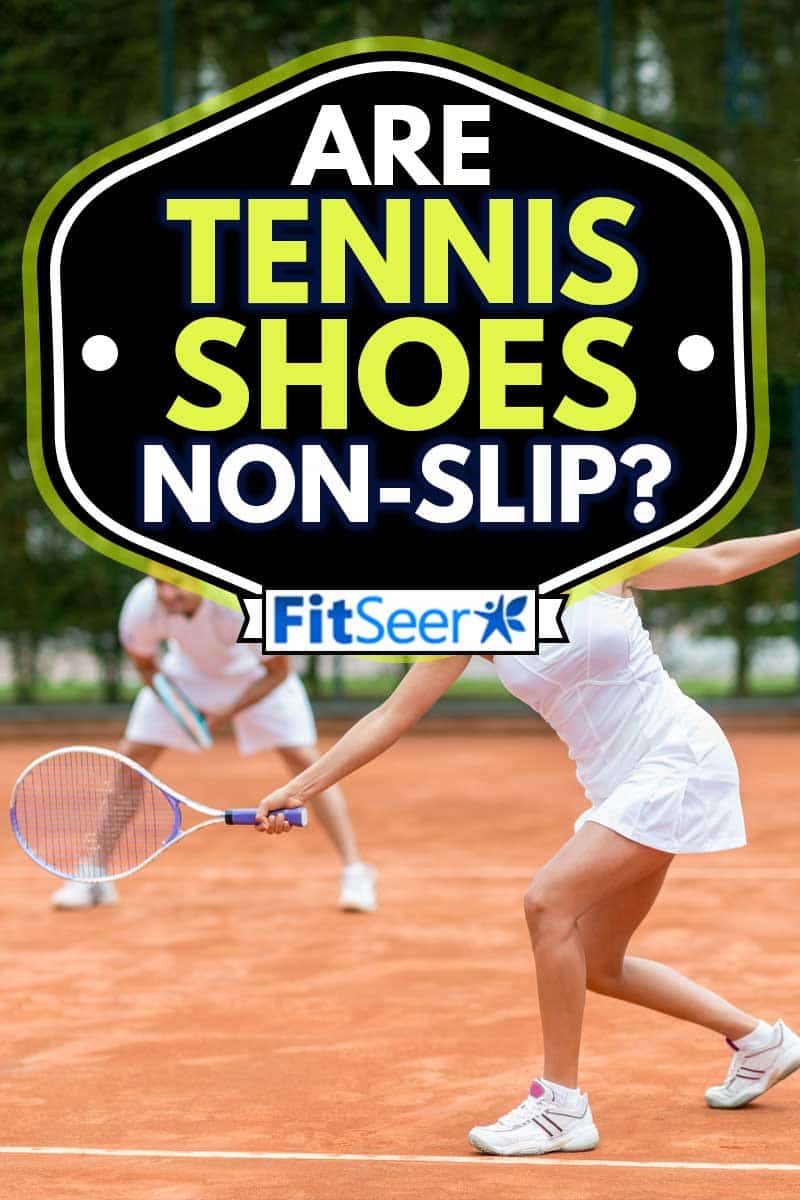
Interested in more tennis tips? Check out our related posts:
https://fitseer.com/does-tennis-count-as-cardio/
https://fitseer.com/do-tennis-strings-go-bad-or-expire/


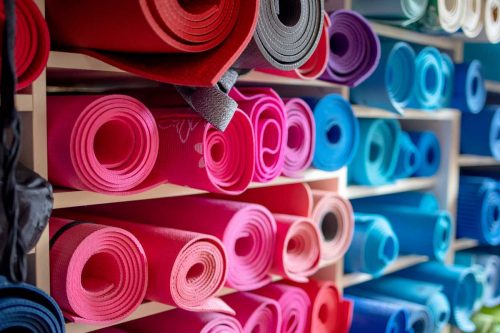
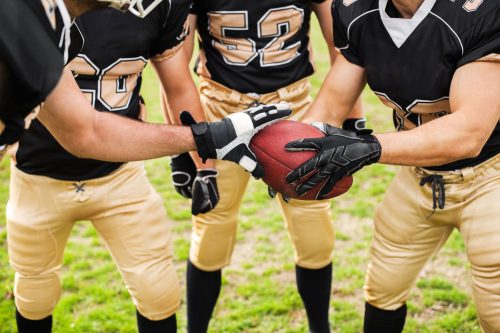
![Read more about the article How To Clean Mesh Running Shoes? [5 Steps]](https://fitseer.com/wp-content/uploads/2020/11/Pair-of-light-breathable-summer-shoes-on-natural-wooden-board-surface-500x333.jpg)
